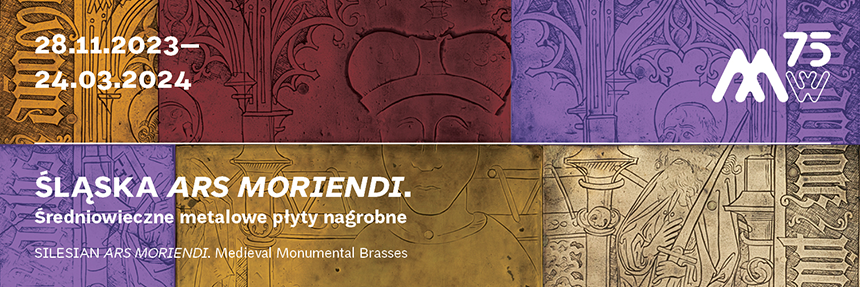Fifteenth-century monumental brasses
In the late 14th-early 15th c., Silesian workshops adapted a new technology of monumental brasses along new stylistic solutions: the changes reflected the Flemish influence. Assembled of cast rectangular plates, the brass layer now covered the entire surface of the stone slab.
The cost of materials was so high and the casting process so time- and labour-consuming that when the molten metal would not fill the entire mould, the size of the plate was reduced accordingly to avoid the need to repeat the process. For this reason, the size of brass sheets making up the brass may be not uniform. The sheets were polished only on the face side to even out the surface and remove traces of any corrections. Thus prepared sheets were then assembled and filed to make gaps between them as small as possible. On the reverse side, all sheets were riveted to a grid of steel bars spanning the whole length and width of the stone slab, the bar ends bent to facilitate their secure mounting to the stone slab. The steel grid kept all sheets in position at a set distance from the stone and prevented their displacement.
The surface of brass sheets was then decorated with flat and relief engraving: this technique was employed to make inscribed borders and sometimes also to render the principal scene and heraldic motifs. This type of decoration is found on the monumental brasses of: Henry of Legnica (d. 1398), Jan von Deher (d. 1455), Piotr II Nowak (d. 1456), Rudolf von Rüdesheim (d. 1482), and Wenceslaus of Żagań (d. 1488).
